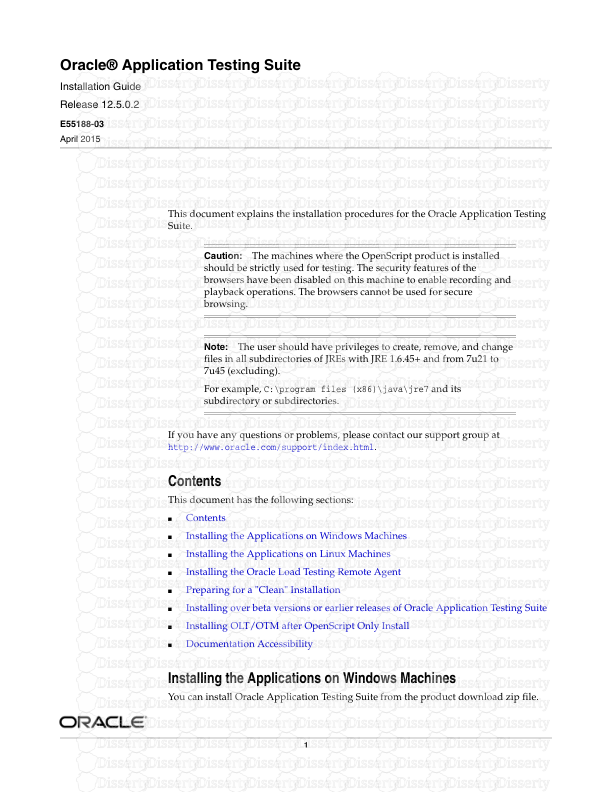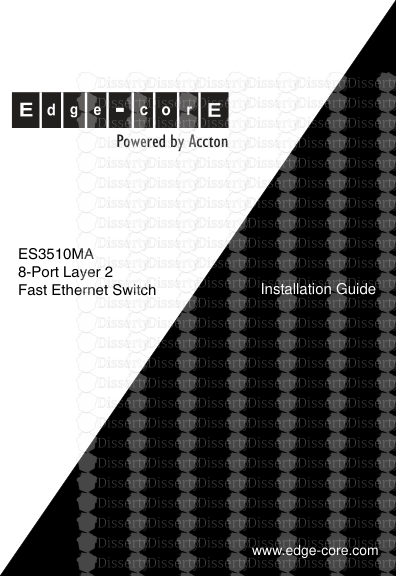PROFIBUS Installation Guidelines Revision 7.2 October 2009 PROFIBUS Competency
PROFIBUS Installation Guidelines Revision 7.2 October 2009 PROFIBUS Competency Centre Automation Systems Centre Manchester Metropolitan University InstallationGuideV7.2.doc PROFIBUS Installation Guideline V7.2 ©MMU Page i Table of Contents 1. INTRODUCTION ...................................................................................................1 1.1. PICKUP IN FIELDBUS CABLES...............................................................................1 Electrostatic pickup ...............................................................................................................1 Electromagnetic pickup .........................................................................................................1 Pickup Reduction ...................................................................................................................2 1.2. PROFIBUS CONNECTION TECHNOLOGY.............................................................2 1.3. RS 485 TRANSMISSION ........................................................................................3 Balanced Transmission and screening ..................................................................................4 1.4. SEGMENTATION ...................................................................................................5 1.5. FIBRE-OPTIC TRANSMISSION ...............................................................................6 1.6. MBP TRANSMISSION ...........................................................................................6 2. DEVICE ADDRESSING ........................................................................................7 2.1. SETTING ADDRESSES ...........................................................................................7 Physical address switch on the device...................................................................................7 Software setting of device address over PROFIBUS.............................................................7 Special software and communication link .............................................................................8 2.2. SETTING AN ADDRESS ON A BINARY SWITCH........................................................8 2.3. RESERVED ADDRESSES.........................................................................................8 3. PROFIBUS RS485 WIRING..................................................................................9 3.1. REFLECTIONS AND TERMINATION......................................................................10 3.2. SPUR LINES ........................................................................................................12 3.3. PROFIBUS RS485 CONNECTORS AND WIRING TOOLS.......................................12 3.4. PIGGY-BACK SOCKETS .......................................................................................14 3.5. COMMON RS 485 WIRING ERRORS .....................................................................15 3.6. HAND-HELD CABLE TEST TOOLS ........................................................................15 3.7. WIRING TESTING USING THE BT200 ..................................................................16 Basic cable testing ...............................................................................................................16 Use of the BT200 keypad and display..................................................................................17 Wiring Testing using the HMS NetTest II............................................................................18 3.8. M12 CONNECTOR SYSTEMS...............................................................................18 4. LAYOUT OF DP SEGMENTS............................................................................19 4.1. IDEAL SEGMENT LAYOUT ...................................................................................20 4.2. NETWORK LAYOUT WITH REPEATERS AND OLMS ............................................22 4.3. RS485 CABLE LENGTH CONSIDERATIONS .........................................................22 When are stub-lines allowed?..............................................................................................23 4.4. SPECIAL REQUIREMENTS FOR BAUD RATES >1.5 MBIT/S....................................24 5. LAYOUT OF PA SEGMENTS............................................................................24 5.1. COUPLER AND LINK TECHNOLOGY .....................................................................25 Simple DP/PA couplers .......................................................................................................25 Siemens DP/PA Link Module...............................................................................................25 Pepperl+Fuchs Modular Coupler .......................................................................................26 5.2. MBP SPUR LINES...............................................................................................27 5.3. MBP TERMINATION ...........................................................................................27 5.4. INTRINSIC SAFETY CONSIDERATIONS.................................................................28 6. CABLES FOR PROFIBUS...................................................................................29 InstallationGuideV7.2.doc PROFIBUS Installation Guideline V7.2 ©MMU Page ii 6.1. CABLES FOR PROFIBUS RS485 SEGMENTS......................................................29 6.2. CABLE FOR PROFIBUS PA...............................................................................30 7. INSTALLING PROFIBUS CABLES..................................................................31 7.1. GENERAL GUIDELINES.......................................................................................31 7.2. CABLE SEGREGATION ........................................................................................31 7.3. USE OF CABLE TRAYS AND CHANNELS ...............................................................32 7.4. CABLING WITHIN WIRING CABINETS.................................................................33 7.5. POTENTIAL EQUALISATION................................................................................34 8. REPEATERS .........................................................................................................35 9. FIBRE OPTIC COMPONENTS..........................................................................36 9.1. OPTICAL LINK MODULES...................................................................................36 10. BIBLIOGRAPHY..................................................................................................37 Documents available from PROFIBUS International (www.profibus.com) .......................37 Other documents and publications ......................................................................................37 INDEX.................................................................................................................................37 InstallationGuideV7.2.doc PROFIBUS Installation Guideline V7.2 ©MMU Page 1 of 39 1. Introduction This document provides information on the design, lay-out, installation and testing of PROFIBUS networks. The information contained originates from a number of sources (see bibliography). Important Notice Although considerable care has been taken to ensure that the information contained in this document is accurate and complete, no responsibility can be taken for errors in the document or installation faults arising from its use. PROFIBUS is an extremely flexible and reliable communication technology, however, like all high-speed digital communications systems, problems can be caused by a number of simple errors. Poor wiring and layout can cause pickup or interference in cables giving corrupted telegrams. Incorrect termination and many other errors can cause reflections to occur in fieldbus cables, resulting in distorted and corrupted telegrams. In order to understand how to avoid some of these problems we must first understand how they occur. 1.1. Pickup in Fieldbus Cables Pickup occurs when outside influences such as cables or equipment carrying high voltages and/or high currents induce unwanted signals in our fieldbus cables. There are two main mechanisms for pickup of interference from other electrical cables or equipment: Electrostatic pickup Here, electrostatic or capacitive coupling between the interference source and the fieldbus cable induces electrical voltages in the cable. The closer the cables the greater the coupling between the cables and hence the worse the pickup will be. Cables carrying high voltages, high frequencies or rapidly changing voltages are particularly prone to inducing electrostatic pickup. High Voltage High Voltage Signal cable e.g. Instrumentation Interference source e.g. Power cable Signal cable e.g. Instrumentation Interference source e.g. Power cable Capacitive coupling between cables Pickup Pickup Electromagnetic pickup Here, magnetic or inductive coupling between the interference source and the fieldbus cable induces electrical currents in the cable. Again, the closer the cables the greater the coupling and the worse the pickup will be. Cables carrying high current or rapidly changing current are particularly prone to inducing electromagnetic pickup. High Current High Current Inductive coupling between cables Pickup Pickup Signal cable e.g. Instrumentation Interference source e.g. Power cable Signal cable e.g. Instrumentation Interference source e.g. Power cable InstallationGuideV7.2.doc PROFIBUS Installation Guideline V7.2 ©MMU Page 2 of 39 Pickup Reduction Shielding or screening the signal cable can reduce electrostatic pickup. However, shielding is only effective when the shield is properly connected to earth (ground). Unearthed screening has no effect whatsoever; in fact it can make the pickup worse! High Voltage Signal cable e.g. Instrumentation Interference source e.g. Power cable Pickup High Voltage High Voltage Signal cable e.g. Instrumentation Interference source e.g. Power cable Signal cable e.g. Instrumentation Interference source e.g. Power cable Pickup Pickup Pickup passes to ground Twisted pair cable significantly reduces electromagnetic pickup. This is because the induced currents that flow in each loop of the twisted pair cable are flowing in different directions along the wire and hence on average tend to cancel out. Induced currents in adjacent loops tends to cancel Induced currents in adjacent loops tends to cancel Pickup Pickup Pickup Installation of the fieldbus cable in earthed, magnetically impervious ducting (i.e. steel tray or conduit) can further reduce both electrostatic and electromagnetic pickup. This is because the steel provides magnetic shielding for the magnetic fields that induce electromagnetic pickup and the earthed enclosure provides additional shielding against electrostatic pickup. Steel enclosure provides electromagnetic screening Steel enclosure provides electromagnetic screening Earth connection provides electrostatic screening Earth connection provides electrostatic screening Interference Interference 1.2. PROFIBUS Connection Technology PROFIBUS has an extremely wide range of application and therefore utilises several different transmission technologies. PROFIBUS DP and FMS both use RS 485 (also called H2) transmission. In addition fibre optic (FO) transmission can be used. PROFIBUS PA uses Manchester Bus Powered (MBP) transmission as specified in IEC 61158-2 (also called H1). InstallationGuideV7.2.doc PROFIBUS Installation Guideline V7.2 ©MMU Page 3 of 39 The PROFIBUS Open System Interconnection model OSI defines a 7-layer model from Application Layer to Physical Layer. PROFIBUS does not use Layer 3 to 6. So, in PROFIBUS, the basic operation is defined by Layer 2 and the application layer, Layer 7. Layer 2 is called Fieldbus Data Link or FDL, which defines how devices access the bus and how the bits and bytes are presented, i.e. it defines the data format. At the application layer the data are interpreted. So, you have various PROFIBUS applications, i.e. DP-V0, DP-V1 and DP-V2. FDL plus the application specification forms the PROFIBUS protocol. User Layer is not defined in the OSI model because the variety of applications. While in the Process automation, you can standardise analogue input and output values using device profiles, for example, 4 bytes of data to represent the process value and 1 byte of data to indicate the quality status. Device profiles are a great way to map data onto communication protocols and hence standardise applications. PROFIsafe and PROFIdrive are other profiles within PROFIBUS. All variations of PROFIBUS (DP, PA, PROFIsafe and PROFdrive) can be on the same network and can talk to each other as they use the exactly same protocol. PROFIBUS FMS has different application layer so it cannot communicate with other PROFIBUS devices. ROFIBUS FMS masters communicate with PROFIBUS FMS slaves. However, FMS shares RS-485 physical layer with DP and hence can co-exist on the same bus. FMS has become a legacy system and no longer supported by PROFIBUS International. 1.3. RS 485 Transmission PROFIBUS RS485 uses shielded twisted pair cable allowing communication at up to 12Mbit/s. RS485 can be used to connect up to 32 devices in a single segment (piece of cable). The allowable segment cable length depends upon the bit rate being used. The allowable segment InstallationGuideV7.2.doc PROFIBUS Installation Guideline V7.2 ©MMU Page 4 of 39 cable length varies from 100m maximum at high speed to 1000m maximum at low speed (see section 4.9). Balanced Transmission and screening RS 485 is a balanced two-wire transmission system, which means that it is the difference in voltage between the two wires that carries the information rather than the voltage relative to ground or earth. Balanced transmission is much less sensitive to pickup and interference than single-ended or unbalanced transmission. Let us see why: Unbalanced transmission “Unbalanced transmission” is where we use a signal wire and a zero-volt reference wire: Interference Interference Signal Reference Transmitter Receiver Signal Reference Transmitter Receiver Reference is connected to low impedance ground Electrostatic and electromagnetic interference can be picked up by both the signal and ground wire, however since the ground wire is connected to low resistance earth, the induced voltages and currents pass to earth and have little effect. The signal wire, on the other hand, picks up these induced signals resulting in corrupted transmission. Unbalanced transmission is surprisingly common: RS232, 4-20mA, and many other transmission technologies use unbalanced transmission. Earthed screening can reduce electrostatic pickup, but, unbalanced transmission can give rise to “Earth Loops” if the reference wire is earthed at both ends. Earth loops cause variations in the reference voltage at the transmitter and receiver: Signal Ground Small ground current gives rise to uploads/s3/ profibus-installation-guide.pdf
Documents similaires










-
46
-
0
-
0
Licence et utilisation
Gratuit pour un usage personnel Attribution requise- Détails
- Publié le Aoû 26, 2021
- Catégorie Creative Arts / Ar...
- Langue French
- Taille du fichier 1.1169MB


